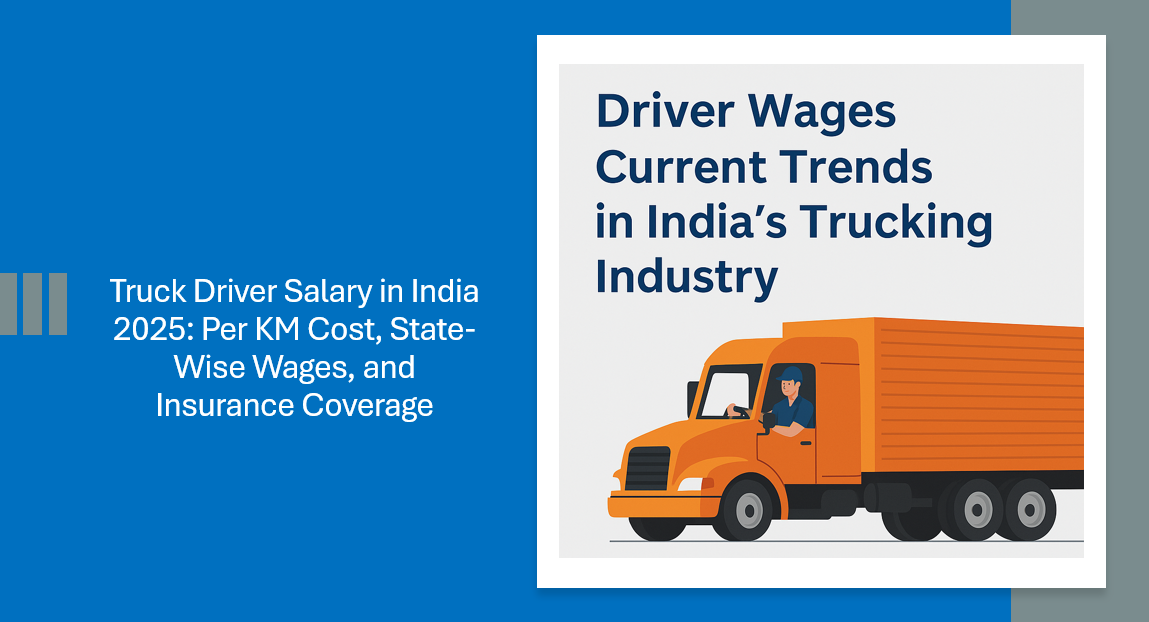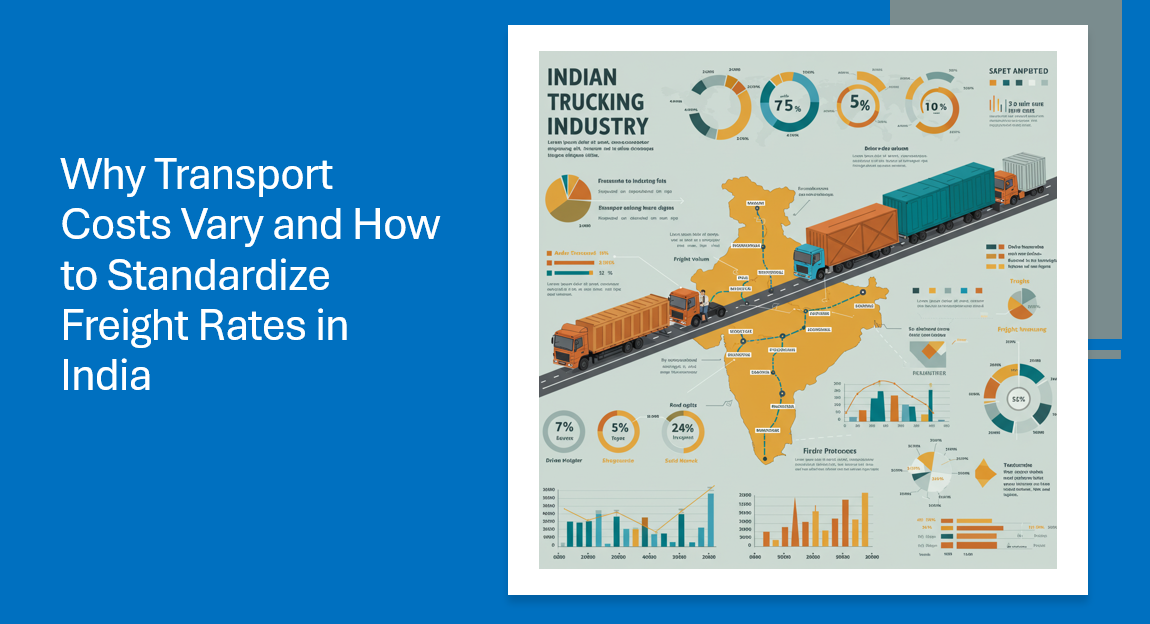Introduction:
The trucking industry is at a major crossroads these days. As the world keeps moving faster, there’s a burning need to make this industry more sustainable and environmentally friendly. We can’t keep ignoring the huge carbon footprint and pollution that comes with all those trucks on the roads. The concerns over the environmental impact are only growing louder.
But you know what? I think AI could be a game-changer here. Hear me out – utilizing cutting-edge AI technology might just be the key to transforming sustainability practices in trucking. I know it sounds futuristic but stick with me. AI has crazy potential to drive meaningful, eco-friendly changes that could shake up this industry.
So, let’s dig into the nitty-gritty of how AI could make trucking greener. I think if we break it down, you’ll see why I’m so excited about the possibilities. It’s a complex issue for sure, but AI just might provide some brilliant solutions if we’re open-minded about it. What do you say? Ready to explore how AI could steer trucking in an awesome new direction?

Problem Statement:
Sustainability in trucking poses a significant challenge due to the industry’s heavy dependence on fossil fuels, resulting in substantial carbon emissions and environmental degradation. Traditional logistics operations often lack the agility and efficiency needed to minimize their ecological footprint effectively. Moreover, the complexity of supply chain networks further worsens the issue, making it challenging to implement sustainable practices seamlessly.
Analysis of Pain Points:
Carbon Emissions: The primary concern in trucking sustainability revolves around carbon emissions. Diesel-powered trucks contribute significantly to air pollution and greenhouse gas emissions, worsening climate change and environmental degradation.
Fuel Dependency: The industry’s dependence on fossil fuels not only contributes to environmental harm but also exposes businesses to volatile fuel prices, impacting their bottom line.
Inefficiencies in Routing: Inefficient route planning leads to unnecessary fuel consumption and emissions. Manual route optimization processes often fail to account for real-time traffic conditions and other variables, resulting in suboptimal outcomes.
Limited Visibility: Lack of real-time visibility into fleet operations hampers efforts to monitor fuel consumption, identify inefficiencies, and implement proactive measures for sustainability.
Regulatory Compliance: Strict environmental regulations impose additional compliance burdens on trucking companies, necessitating complete tracking and reporting mechanisms to ensure adherence.

Possible Solutions without AI:
Before diving into the role of AI in revolutionizing sustainability in trucking, let’s first consider traditional solutions that have been employed to address these challenges:
Driver Training Programs: Implementing widespread driver training programs can promote fuel-efficient driving behaviours, such as avoiding sudden accelerations and excessive idling, thereby reducing fuel consumption and emissions.
Alternative Fuel Sources: Exploring alternative fuel sources, such as biodiesel, natural gas, or hydrogen fuel cells, offers potential avenues to reduce reliance on fossil fuels and mitigate environmental impact.
Improved Logistics Planning: Manual optimization of logistics processes, including load consolidation, backhauling, and multi-modal transportation, can help minimize empty miles and optimize resource utilization.
Fleet Modernization: Upgrading fleet vehicles with newer, more fuel-efficient models or retrofitting existing vehicles with aerodynamic enhancements and fuel-saving technologies can yield incremental improvements in sustainability.
Collaborative Initiatives: Collaborating with industry partners, suppliers, and customers to establish sustainability-focused initiatives, such as carbon offset programs or shared transportation networks, can amplify collective efforts to reduce environmental footprint.
While these traditional approaches have merit, they often entail limitations in scalability, efficiency, and adaptability to dynamic operational environments. Now, let’s explore how AI can augment and enhance these solutions, propelling sustainability efforts in the trucking industry to extraordinary levels of effectiveness.

Possible Better Solutions With AI:
Harnessing the power of Artificial Intelligence (AI) unlocks a wealth of opportunities to transform sustainability practices in trucking. Let’s examine how AI can augment traditional solutions and introduce innovative approaches to address the identified pain points:
Driver Behavior Optimization:
AI-based Driver Monitoring Systems: Advanced AI algorithms analyze driver behavior patterns, such as speeding, harsh braking, and idling, to provide personalized coaching and incentives for fuel-efficient driving practices.
Predictive Analytics for Maintenance: AI-powered predictive maintenance systems forecast potential vehicle failures based on historical data and real-time sensor readings, enabling proactive maintenance interventions to optimize vehicle performance and minimize emissions.
Fuel Efficiency and Route Optimization:
AI-driven Route Planning and Optimization: Machine learning algorithms continuously analyze vast datasets, including traffic patterns, weather conditions, and delivery schedules, to optimize routes for fuel efficiency and minimize environmental impact.
Dynamic Energy Management: AI-powered energy management systems optimize the use of hybrid and electric vehicles by adjusting power distribution based on real-time driving conditions and battery performance metrics.

Fleet Management and Resource Optimization:
Predictive Analytics for Demand Forecasting: AI-driven demand forecasting models analyze historical data and market trends to predict future demand patterns, enabling companies to optimize fleet deployment and minimize empty miles.
Real-time Monitoring and Compliance:
AI-powered Telematics and IoT Solutions: Integrated IoT sensors and telematics platforms provide real-time visibility into fleet operations, enabling proactive monitoring of vehicle performance, fuel consumption, and regulatory compliance.
Automated Regulatory Compliance: AI-driven compliance management systems automate regulatory tracking and reporting processes, ensuring timely adherence to environmental regulations and minimizing the risk of non-compliance penalties.

Implementation of AI Solutions:
Integrating AI solutions into the trucking industry requires a strategic approach and careful consideration of various factors, including technological readiness, organizational capacity, and regulatory compliance. Here’s a step-by-step guide to implementing AI solutions for sustainability in trucking:
Data Collection and Integration: Gather relevant data from various sources, including telematics systems, IoT sensors, fleet management software, and external databases. Ensure data quality, consistency, and compatibility for seamless integration into AI algorithms.
AI Model Development: Collaborate with data scientists and AI experts to develop customized AI models and algorithms suited to the unique requirements of trucking operations. Leverage machine learning techniques to train models on historical data and refine them through continuous learning and optimization.
Deployment and Integration: Roll out AI-powered solutions across the fleet and logistics network, ensuring seamless integration with existing infrastructure and software systems. Provide training and support to personnel to facilitate the smooth adoption and utilization of AI tools and technologies.
Regulatory Compliance and Governance: Ensure compliance with relevant regulations and industry standards governing data privacy, cybersecurity, and environmental sustainability. Implement robust governance frameworks and protocols to safeguard sensitive data, mitigate risks, and maintain transparency and accountability in AI-driven operations.
By following this implementation roadmap, trucking companies can harness the transformative potential of AI to drive sustainability and innovation in their operations, positioning themselves as leaders in the transition towards a greener and more efficient future.

Challenges:
Despite the immense potential of AI in enhancing sustainability in trucking, several challenges must be addressed to ensure successful implementation and adoption:
Data Quality and Accessibility: Access to high-quality, comprehensive data is essential for training AI models and generating meaningful insights. However, data fragmentation, inconsistency, and siloed systems may hinder data accessibility and usability, requiring concerted efforts to standardize and integrate disparate data sources.
Technological Integration: Integrating AI solutions into existing IT infrastructure and operational workflows can be complex and resource-intensive. Compatibility issues, legacy systems, and resistance to change may pose barriers to seamless technological integration, necessitating careful planning and stakeholder engagement.
Resource Constraints: Implementing AI solutions requires significant investments in technology, talent, and infrastructure. Smaller companies and independent operators may face challenges in accessing the necessary resources and expertise, potentially widening the digital divide within the industry.
Regulatory Uncertainty: Evolving regulatory frameworks and compliance requirements pose uncertainties and compliance burdens for AI-driven trucking operations. Companies must navigate complex legal and regulatory landscapes, ensuring alignment with environmental regulations, data protection laws, and industry standards.
Ethical Considerations: AI applications in trucking raise ethical concerns related to data privacy, algorithmic bias, and job displacement. Companies must prioritize ethical principles and accountability in AI development and deployment, fostering trust and transparency among stakeholders.

Conclusion:
In conclusion, the integration of Artificial Intelligence (AI) holds immense promise for revolutionizing sustainability in the trucking industry. By leveraging AI-powered solutions, companies can moderate environmental impact, optimize operational efficiency, and navigate the evolving regulatory landscape effectively. From optimizing route planning and fuel consumption to enhancing driver behavior and compliance management, AI offers a myriad of opportunities to drive meaningful change and propel the industry toward a greener and more sustainable future.

As we embark on this transformative journey, industry stakeholders must collaborate, innovate, and embrace change proactively. By investing in AI technologies, fostering a culture of sustainability, and prioritizing ethical considerations, trucking companies can position themselves as leaders in the transition towards a more environmentally responsible and efficient transportation ecosystem.
Call-to-Action: To harness the full potential of AI in advancing sustainability in trucking, I encourage industry stakeholders to take the following actions:
Invest in AI Research and Development: Allocate resources and funding towards AI research, development, and innovation initiatives aimed at addressing key sustainability challenges in trucking.
Promote Collaboration and Knowledge Sharing: Foster collaboration among industry peers, technology providers, academia, and government agencies to share best practices, insights, and lessons learned in AI implementation and sustainability efforts.
Prioritize Environmental Stewardship: Embed sustainability principles and practices into organizational culture and strategic decision-making processes, demonstrating a commitment to environmental stewardship and corporate responsibility.
Support Policy Advocacy and Advocacy: Advocate for policies and regulations that incentivize the adoption of AI technologies and promote sustainable practices in the trucking industry, driving systemic change at the local, national, and global levels.
Empower Workforce Development: Invest in training and upskilling programs to equip employees with the skills and knowledge needed to leverage AI technologies effectively and contribute to sustainability initiatives.
By taking concerted action and embracing AI-driven innovation, we can chart a course toward a more sustainable, robust, and prosperous future for the trucking industry and the planet as a whole.
Thank you for joining me on this journey towards a greener future.
Stay tuned for more insights on how AI is reshaping the future of logistics and supply chain management. Together, let’s embark on a journey towards smarter, more connected, and more efficient Follow My LinkedIn
Kalaiselvan Vasudevan| Professional Logistics Solutioneer | LinkedIn
Big thanks to all the LLMs Models and their Founders! You’ve created some amazing AI tools that have inspired me to become a Blog Writer, Digital Artist, and Prompt Engineer! 🚀 #OpenAI #CopilotAI #DesignerAI #Claude2 #GoogleGemini #llama2 #AllOpenSourceAIModels #Grammarly #LinkedIn 🎨📝
#LogisticsRevolution #AITransformation #SupplyChainInnovation #FutureOfLogistics #TechInLogistics #AISustainability #GreenLogistics #SupplyChainInnovation #FutureOfTransport #TruckTech







Leave a Reply